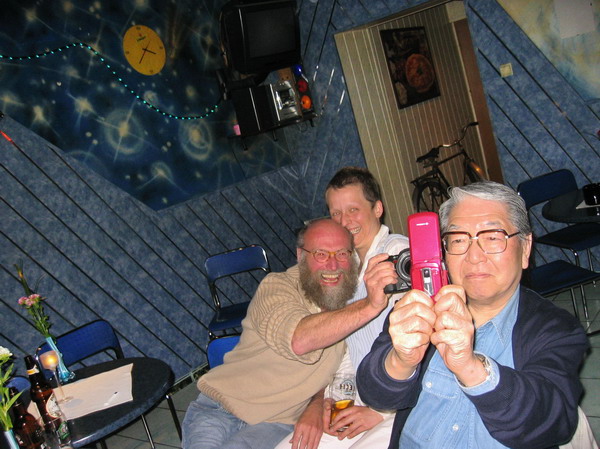The British Journal of Photography has a rather low opinion of it’s readers when it states “Few readers will have heard of let along seen Masahisha Fukases 1986 book, Karasu (Ravens), first printed by Sokyu-sha, a Japanese publisher based in Tokyo.”
Do I feel insulted or give myself a pat on the back as one of the chosen few? No, but I do feel it rather more reflects the ignorance of the writers of the BJP about the wider aspects of photography which are too often demonstrated on its pages than anything about its readership, and for a publication hoping to establish itself as a monthly devoted to the medium is disappointing. Guys you need to up your game. In many respects the latest May issue is an improvement (and I’m pleased to see that it has lost the typographic fancies that made it literally hard for me to read.)
Although I don’t own ‘Karasu‘ I was among the thousands of us in London who flocked to the Serpentine Gallery in 1985-6 (and it was also shown in Oxford) for the show ‘Black Sun‘ which featured Fukase’s work along with that of three other great Japanese masters, Eokoh Hosoe, Shomei Tomatsu and Daido Moriyama and have the Aperture issue of the same name by Mark Holborn which served as a fine catalogue. It has 16 pages devoted to Fukase’s work, and in particular to the crows. Much more recently I remember seeing a whole wall of this work, I think at the V&A, and the former director there, Mark Haworth-Booth is among those listed in the acknoledgements to ‘Black Sun’.
More recently in 2008, Paris Photo had its thematic show on Japanese photography from 1848 to the present day and on this site I wrote “Of course there will be plenty of familiar work, including people such as Shoji Ueda, Ihei Kimura, Masahisa Fukase, Eikoh Hosoe, Shomei Tomastu, Hiroshi Sugimoto, Nobuyoshi Araki and Daido Moriyama” and there was.
Japanese photography, despite my particular interest in the work of people such as Eikoh Hosoe (who I was really delighted to meet in Poland in 2005) and Issei Suda, one of whose books I bought many years ago was an area I had only really just started to work seriously on in the ‘World Photography’ section of my ‘About Photography’ site when my contract was terminated. A couple of years earlier I had published a piece ‘Early Photography in Japan’ which had dealt largely with the nineteenth century and was hoping to write more on the twentieth century, although I had written short notes about Fukase and the others.

Eikoh Hosoe photograhs me with a pink phone in Alacatraz
The BJP calls Karasu “an obscure masterpiece” and expresses surprise it was chosen as the best photobook of the past 25 years in their critic’s poll and you may like see the list of the other works that these “five experts” (themselves somewhat randomly chosen) have selected. Perhaps surprisingly, the one Japanese among them, Yoko Sawada, who was responsible for many of the issues of the influential Japanese photographic magazine déjà-vu in the first half of the 1990s, does not mention the book, picking works by five other Japanese photographers starting with Nobuyoshi Araki to whom 4 of the magazine’s 20 issues (including its last produced by Akihito Yasumi) were entirely devoted.
There are rather few books on the list I would have chosen, although I’m familiar with many of them. Those I own are Nan Goldin’s ‘Ballad of Sexual Dependency‘, Chris Killip’s In Flagrante and What We Bought: The New World by Robert Adams, although I do have other works by several of the photographers named.
I don’t really subscribe to the idea of “the best photobook“. Books to me are working tools, things I use, and if you have a job that needs a screwdriver even the best spanner is likely to be pretty useless. I’ve never felt a need – nor do I expect to – for quite a few of the volumes listed by this very small selection of critics.
What I have read recently is ‘Crow Country‘ by Mark Crocker, described in the Independent as “A thoughtful and brilliantly executed celebration of countryside and the importance of nature in human affairs.” It contains no photographs, but is superb evocation of one man’s obsession with the the corvid family of birds – crows, rooks, jackdaws, ravens and more – and his attempts to find what lies behind their migrations, roosting and massing. It’s a work that perhaps might well be read alongside Fukase’s work.